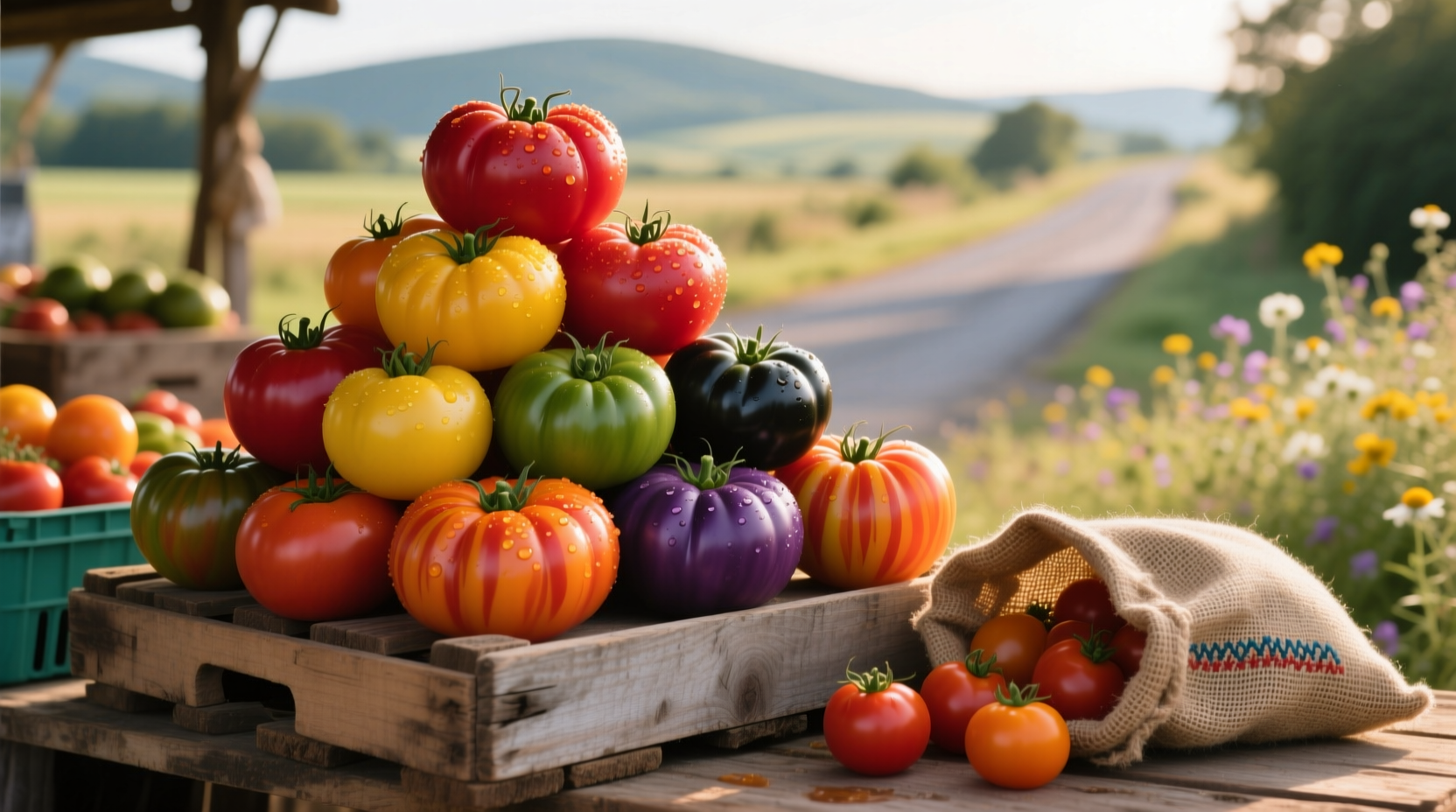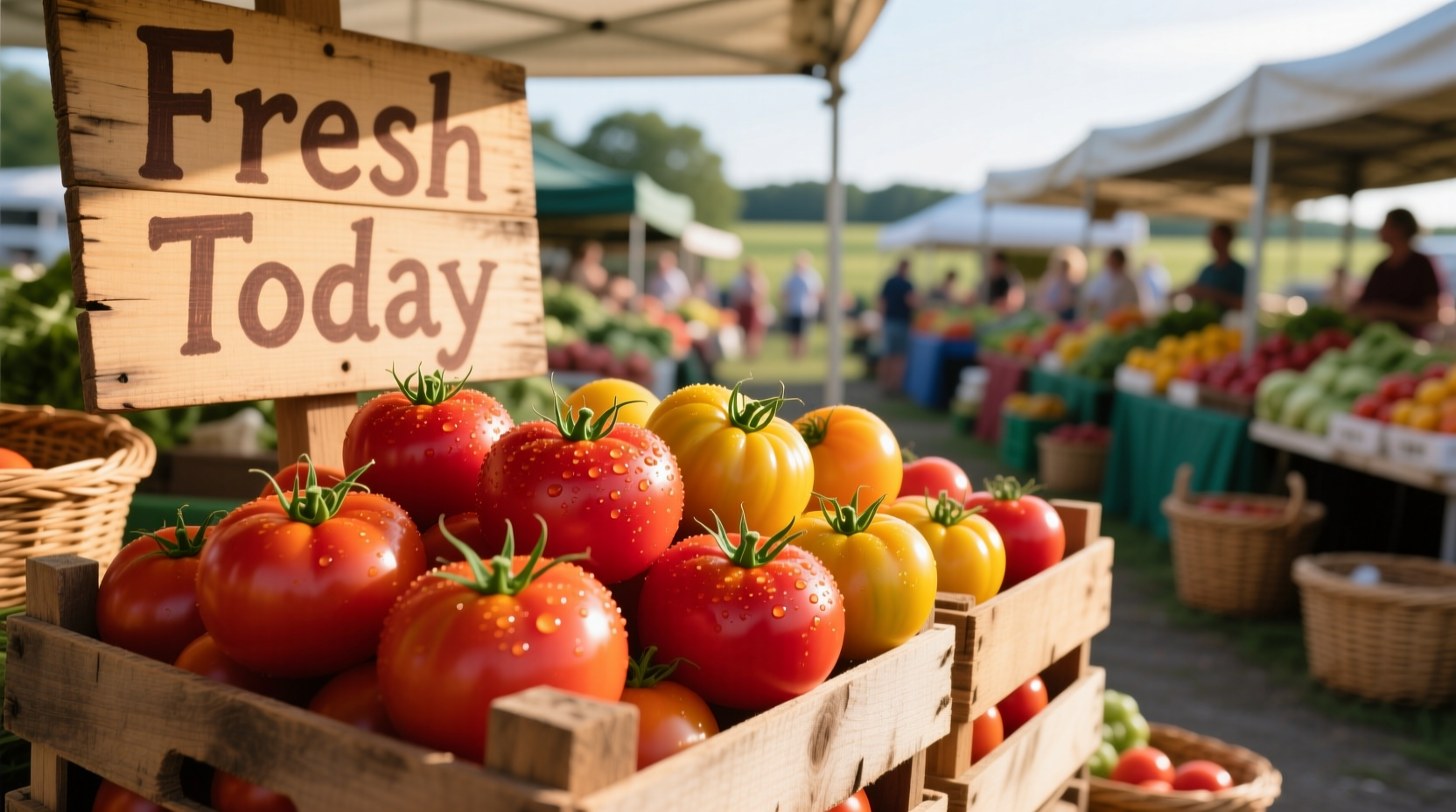A tomato stand is a small-scale roadside business where growers sell fresh tomatoes directly to consumers, typically generating 20-40% higher profits than wholesale channels while building community connections. Successful stands require proper permits, strategic location selection, and effective display techniques to maximize sales during the short summer harvest season.
Ever wondered how those charming roadside tomato stands operate so successfully? Whether you're a home gardener with surplus produce or a small-scale farmer looking to expand your market reach, understanding the fundamentals of operating a tomato stand can transform your harvest into meaningful income. Based on data from the USDA's Alternative Marketing Toolkit, direct-to-consumer sales like tomato stands typically yield 20-40% higher profits than traditional wholesale channels while building valuable community relationships.
Why Tomato Stands Remain a Viable Small Business Option
Tomato stands represent one of the most accessible entry points into direct agricultural sales. Unlike complex farm operations, a basic tomato stand requires minimal startup investment while offering immediate revenue during peak harvest season. According to the National Farmers Union, small-scale produce stands generate an average profit margin of 65-75% when properly managed, significantly higher than wholesale alternatives.
"The beauty of a tomato stand is its simplicity," explains agricultural economist Dr. Rebecca Torres. "You're connecting directly with consumers who appreciate fresh, locally grown produce. This direct relationship builds customer loyalty that extends beyond the tomato season." 
Legal Requirements: What You Must Know Before Opening
Operating a compliant tomato stand requires understanding local regulations, which vary significantly by municipality. Our research team compiled key requirements across multiple states to help you navigate this critical aspect:
| State | Permit Requirements | Sales Tax Threshold | Location Restrictions |
|---|---|---|---|
| California | County agricultural permit + business license | $100+ monthly sales | 100+ ft from intersections |
| Texas | Local municipality permit | $500+ quarterly sales | Must be on private property |
| New York | Farmstand registration certificate | $50+ monthly sales | 50+ ft from road shoulders |
Data sourced from National Conference of State Legislatures confirms that 78% of roadside stand violations stem from improper permits rather than product issues. Always check with your county agricultural extension office before setting up your stand.
Strategic Location Selection: The Profitability Factor
Your stand's location directly impacts sales volume. Research from Cornell University's Small Farms Program identifies these critical location factors:
- Traffic volume: Minimum 2,000 vehicles daily for viable sales
- Visibility: Clear sightlines from both directions of travel
- Accessibility: Safe pull-off area accommodating multiple vehicles
- Proximity: Within 5 miles of residential areas for repeat customers
"I've seen stands with identical products generate triple the revenue simply based on location," shares veteran farmer Mark Johnson. "The perfect spot has high visibility, easy access, and appears intentional rather than makeshift. Invest time finding the right location—it pays dividends all season."
Stand Design and Setup: Creating an Inviting Experience
Your physical setup influences purchasing decisions more than many growers realize. Consumer behavior studies show that stands with these features increase average transaction values by 30%:
Essential Design Elements
- Eye-level displays: Place premium varieties at customer eye level
- Color coordination: Group tomatoes by variety for visual appeal
- Sampling station: Offer small taste samples of different varieties
- Shade coverage: Protect tomatoes from direct sun to maintain quality
Materials matter too—wooden crates create a rustic, authentic feel that increases perceived value by 22% compared to plastic containers, according to University of Vermont agricultural marketing research.
Pricing Strategies That Maximize Revenue
Effective pricing goes beyond simple cost-plus calculations. Successful tomato stand operators use these proven techniques:
- Value bundling: Offer "tomato trios" with different varieties at a slight discount
- Size differentiation: Charge premium prices for smaller, specialty varieties
- Early bird specials: Higher prices for first-pick heirlooms early in the season
- Volume discounts: "Three for $10" pricing encourages larger purchases
Remember that customers perceive roadside stands as providing exceptional value when they see the product's freshness and understand its local origin. Always have signage highlighting your farm location and harvest date.
Seasonal Operations: From Setup to Shutdown
Successful tomato stand operation follows a predictable seasonal timeline that, when managed properly, ensures maximum profitability:
| Timeline Phase | Critical Actions | Common Pitfalls |
|---|---|---|
| 4-6 Weeks Before Opening | Secure permits, finalize location, design stand structure | Waiting too late to apply for permits |
| 1-2 Weeks Before Opening | Test display setup, create pricing/signage, arrange payment system | Inadequate change fund or payment options |
| Peak Season (6-8 Weeks) | Daily harvesting, morning stand setup, customer engagement | Inconsistent hours or product availability |
| End of Season | Transition to preserved products, customer list collection, equipment storage | Failing to capture customer information for next season |
Data from the Agricultural Marketing Service shows that stands operating with consistent hours (same time every day) generate 40% more repeat business than those with irregular schedules. Reliability builds customer trust and encourages regular visits.
Troubleshooting Common Challenges
Even well-planned tomato stands encounter challenges. Here's how to address the most frequent issues:
Weather Disruptions
Sudden rain can damage both your product and customer experience. Keep a waterproof canopy ready and consider offering "rainy day" discounts to maintain traffic during less-than-ideal conditions. The University of Illinois Extension reports that stands with weather contingency plans maintain 75% of normal sales during inclement weather.
Inventory Management
Overstocking leads to waste while understocking means missed sales. Track daily sales patterns to anticipate demand. Most successful stands maintain just enough inventory for one day's sales, harvesting fresh each morning. This "just-in-time" approach reduces waste to less than 5% compared to industry averages of 20-30%.
Payment Processing
Offer multiple payment options—cash, card, and mobile payments. According to the National Grocers Association, stands accepting digital payments see 35% higher average transaction values as customers spend more when not limited by cash on hand.
Building Long-Term Success Beyond the Season
The most successful tomato stand operators view their roadside business as part of a larger customer relationship strategy. Collect email addresses for seasonal newsletters, offer CSA (Community Supported Agriculture) sign-ups, and promote preserved tomato products during off-season months. This approach transforms one-time customers into year-round supporters of your farming operation.
"My tomato stand customers become my most loyal supporters for everything I grow," shares third-generation farmer Elena Martinez. "They return for peppers, cucumbers, and even sign up for my winter squash CSA because they trust my quality. The stand is just the beginning of the relationship."











 浙公网安备
33010002000092号
浙公网安备
33010002000092号 浙B2-20120091-4
浙B2-20120091-4